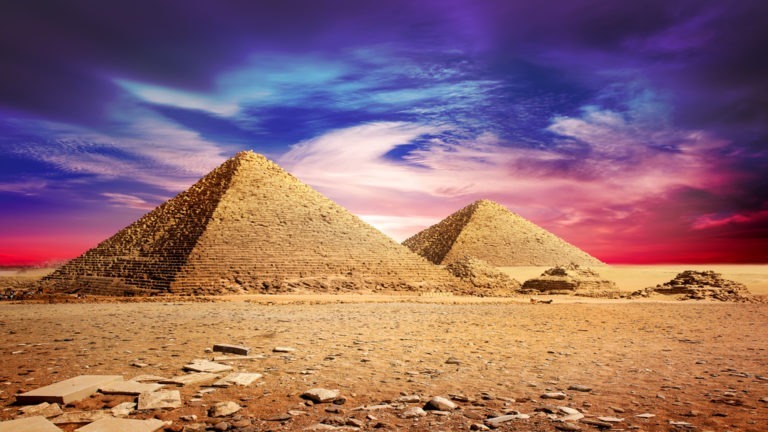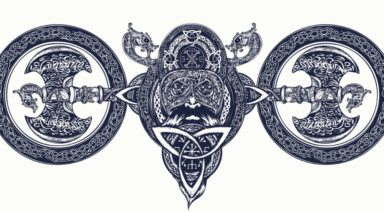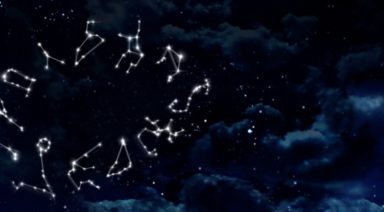The Eight Stages to Immortality and Contentment

The word Tao literally means “The Way,” and is pronounced “dow” (rhymes with how). Taoism began about 600 B.C., but its formal origins are generally attributed to the philosopher Lao-tzu and his book The Way of Power. In this text, he presents the concepts of inaction and spiritual harmony.
But Taoism has gone through many changes over the past 2,600 years. Taoism can be divided into two branches: one seeks a way to physical and social health and well being, and the other seeks a way to eternal reality and immortality. They work together, because a healthy physical self makes an excellent temple for an enlightened mind and immortal Spirit. One sect of Taoism was devoted to conforming to the Law of cause and effect (karma) while transcending the bonds of illusion and confusion. Much of this transcendence was realized through contemplative meditation, breathing exercises, and reversing the flow of energy in the body and thoughts in the mind.
Let’s explore The Way.
8 Stages to Immortality & Contentment
In The Book of Consciousness and Life, written in 1794 by Liu Hua-yang and later published in the popular Secret of the Golden Flower, there are eight stages to immortality and ultimate contentment. Liu Hua-yang begins each stage with a poetic instruction. Each contains attitudinal instructions for the mind and physical activities for the body. The overarching teaching for all of these stages is that all activity should lead to non-activity, all thought to non-thought, and in this still state one will reconnect with one’s true self, the primordial heaven from which we have all come, and rebalance the energy for eternal life.
1. Cessation of Outflowing
If thou would complete the diamond body with no outflowing,
Diligently heat the roots of consciousness and life.
Kindle light in the blessed country ever close at hand,
And there hidden, let thy true self always dwell.
“Heat the roots of consciousness and life” is both a physical and mental practice. Physically, it refers to awakening our root chakra and reversing its energy flow. Mentally, it refers to contemplation upon the genesis of our existence and our original nature. Who am I? What is my true “I am”? And How does my little “I am” correlate to the great “I AM”? As Plato posted above the entrance to his school: Know Thyself.
This Taoist poet and teacher is guiding us to “kindle light in the blessed country ever close at hand,” meaning our inner consciousness and inner body’s spiritual centers (chakras, sushumna, ida, and pingala). He instructs us that this is a hidden place where our “true self always dwells.” Fundamental to this first stage is completing our “diamond body,” by turning within to the original source of life. The diamond body is analogous to Jesus’ teaching that we must be born again. We’ve been born physically — now we must conceive, gestate, and give birth to our spiritual, eternal, true self.
2. Circulation in Conformity with the Law
If one discerns the beginning of the Enlightened One’s path,
There will be the blessed place of the West.
After the circulation in conformity with the Law,
There is a turn upward towards Heaven when the breath is drawn in.
When the breath flows out, energy is directed towards the Earth.
One cycle consists of six intervals.
In two intervals one gathers Sacred Energy.
The great Way comes forth from the center.
Do not seek the primordial seed outside!
The “blessed place of the West” is a poetic way of saying what we Westerners would call the Latter Days, the place of the setting sun, the end of an era. In other words, if we discern our enlightened soul’s path, we will see where it is ultimately headed: back to Heaven, back to the Father, as Jesus taught at the Last Supper. We’ll also see that the bodily path of the Enlightened One is along the kundalini channel, which Edgar Cayce encouraged us to awaken to and use.
“The circulation in conformity with the Law” is both physical and mental. It is a physical technique for raising the energy of our body through the kundalini pathway. This practice does not seek to simply raise the kundalini energy or life force in our body, but to circulate it. The teacher points out that when we inhale “there is a turn toward Heaven.” When we exhale “energy is directed toward Earth.” He states that it only takes two intentional cycles of inhalation and exhalation to gather the Sacred Energy latent in our body. Try this. Sit still … sense your deeper, true self and its eternal destiny. Then as you inhale, draw the energy upward from the root chakra to the top of your head. Hold your breath there for a moment; then, as you exhale, feel the energy flowing throughout your body, bathing it in raised energy, sacred energy. Pause with the lungs empty and your focus on the root chakra. Feel the stillness. Then repeat the breathing exercise again.
Finally, in this stage the instructor guides us not to seek the primordial seed outside of us. It is, as Jesus and so many others have taught, within us.
3. Two Paths of Function & Control
There appears the way of the in-breathing and out-breathing of the primordial path.
Do not forget the white path below the circulation in conformity with the Law!
Always let the cave of eternal life be nourished by the spirit-fire.
Ah! Test the immortal place of the gleaming pearl.
In this metaphorical stanza, the teacher is continuing the breathing exercise while encouraging us not to forget the deeper “white path below the circulation in conformity with the Law” (as you sow, you reap; as you think, so you become). The white path is consciousness. Edgar Cayce often pointed out to highly advanced souls the need to be careful not to forget the difference between the “channel” and the “Creative Forces.” Anyone can move the energy, because the body is arranged for this, but what impelling force is behind this energy? Is it the pure white light of the Creator? Or is it self’s ego? Self, especially righteous self, is a very subtle darkness.
The “cave of eternal life” is the deeper consciousness, beyond the conscious mind and the outer self’s influence. Ezekiel told us that he could not find God in the lightning, the earthquake, or the thunder, but when he backed up to the mouth of the cave, he heard a still, small voice; and there was God. This Taoist teacher is saying the same thing. Nourish the cave of deeper consciousness with the fire of the Spirit, both physically and mentally. Then, just as Jesus encouraged us to test the spirits, the Taoist teacher tells us to test the immortal place. See that it is the pure place, white light, true Creator of all. He compares this to a “gleaming pearl,” which is a good metaphor. It is circular, as is the Sun disk, whole, the beginning and the end being one. And dealing with the irritation of life’s challenges makes this gleaming pearl in the same way that the pearl is formed around an irritating grain of sand in the oyster’s life. And it gleams when the light shines on it.
4. The Embryo of the Way
According to the Law, without exertion, one must diligently fill oneself with light.
Forgetting appearance, look within and help the true spiritual power.
Ten months the embryo is under spirit-fire.
After a year the washings and bathings become warm.
Here the teacher is giving us the gestation period for our rebirth of the true self. He encourages us to help the inner development by budgeting time for the breathing exercises (“washings and bathings” are the intentional inhalations and exhalations, circulating the energy through the body) and by filling ourselves with light. In Egyptian mysticism, Hermes guides us to experience the inner mystical illumination through meditation, and the outer through reading and studying of inspirational writings. Cayce adds that outer-life application of inner experiences brings the fuller understanding.
5. The Birth of the Fruit
Beyond the body there is a body called the Enlightened image.
The thought that is powerful, the absence of thoughts, is Light.
The thousand-pedaled lotus flower opens, transformed through breath-energy.
Because of the crystallization of the spirit, a hundredfold splendor shines forth.
Stage 4 states that after one year the embryo is ready for birth. Stage 5 is that birth. The breathing exercises and the raising of consciousness have opened the lotus flower and crystallized the spirit. Within the physical body and conscious mind are a new body and a new mind.
6. Retaining the Transformed Body
Every separate thought takes shape and becomes visible in color and form.
The total spiritual power unfolds its traces and transforms itself into emptiness.
Going out into being and going into non-being, one completes the miraculous Way.
In this stanza the teacher gives insights into how to maintain the new body, the new mind. Just as the Psalmists of Western biblical thought, he addresses the “going out” and the “coming in” as our daily cycle. This cycle is “the miraculous Way.” Day and night; wakefulness and sleep; activity and non-activity; thought and non-thought; form and formlessness; being and non-being are the rhythms that lead to reunion with a true source. Too much outer life, and we lose the Light to guide us. Too much inner life, and we cannot make enlightenment a living part of us. Budget time for both inner and outer life. Oneness will eventually encompass both.
7. Face Turned to the Wall
The shapes formed by the spirit-fire are only empty colors and forms.
The light of human nature shines back on the primordial, the true.
The imprint of the heart floats among the clouds; untarnished, the moonlight shines.
The boat of life has reached the shore; bright shines the sunlight.
Waxing transcendental, the teacher takes us into the upper reaches of infinite consciousness and life. His imagery is a poetic rendering of his personal experience with reunion to the true, the primordial, the shore of paradise.
In the final stage, he attempts to describe what cannot be described. It is the ineffable, transcending state of pure at-onement with the infinite, the universal, from out of which all life came and in which all life has its existence.
Watch a trailer for The Immortal Path: The Tao of Tai Chi Chuan
Ancient Egyptian Initiation: The Seven Gates

The following is a selected text from The Book of Coming Forth by Light, popularly called The Egyptian Book of the Dead. It is an initiation text to be spoken aloud. Try using it in a ceremonial manner as you prepare for a period of meditation. Use incense and candles, perhaps some bells or music. Special clothing may also add to the ceremonial nature of the initiation process. Each Gate is associated with a specific chakra and thought-cluster. It is important to use your mind’s eye to visualize that center within your body and the concept in your mind as you speak the words associated with it. The words and thoughts are quite powerful. Wherever you see “[Your Name]”, speak your name. For example, I would speak: “May you cause the perfected soul of the Reunited One, the seeker John, to be victorious with you in the Temple of Reunion.”
These gates correlate to our body temple and our mental thoughts. Here are the thoughts you should focus on at each gate. To get the full effect of the initiation you should feel, imagine, and experience the journey. This is how one brings about the full illumination. Do not move through the gates quickly. Try to imbue your mind and body with the thoughts and vibrations of each gate before moving on.






































